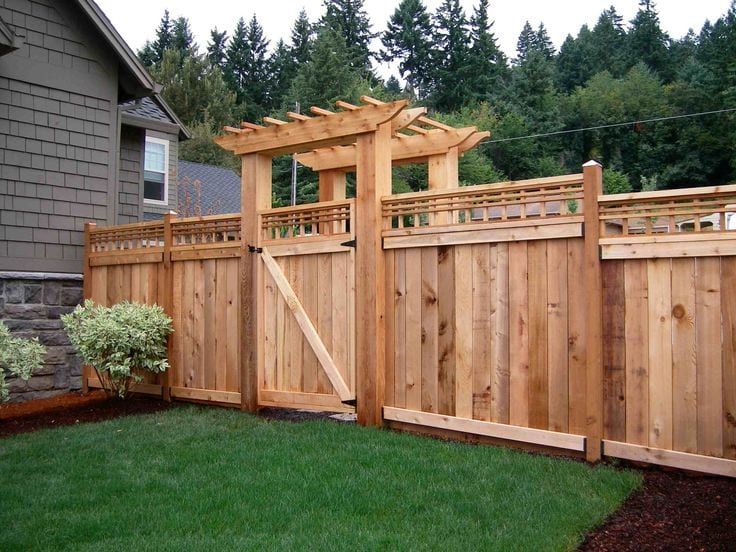How Do I Get Some Privacy In My Backyard?
1)Install a horizontal wood screen or trellis.
Wood screens or trellis are becoming a more fashionable way to block off a smaller area of a backyard like the side of an eating area or pool. The screen can be more traditional with beautiful cedar or have a more modern style to it with some tin or aluminum metal. These wood structures can also have some vines grow on them to soften them up and make them feel more natural in the environment. We installed the trellis and pergola in the picture below.

2) Use some taller arborvitae or other plants to block the view.

3) Build a wood or other material fence.
This is the tried and true method of creating privacy. Fences are great for keeping little kids and dogs safe in a contained backyard. They’re also perfect for full yard privacy if the elevations are completely flat. However, some people don’t like the “boxed in” feeling you can get with high fences. Fences can also be pricier than some of the other solutions mentioned here. So it really depends on the elevation of the house and the usefulness of the fence. We’ve seen some really cool fences built out of more modern materials like aluminum or other metals.

4) Use elevation (if you can) to keep eyes elsewhere.

For any screening or privacy needs, go to our quote page online and let us know how we can help and we’ll be in contact right away. KG Landscape is a local Minneapolis/St. Paul landscape company that prides itself on providing full service landscape and lawn care to all of our clients.










